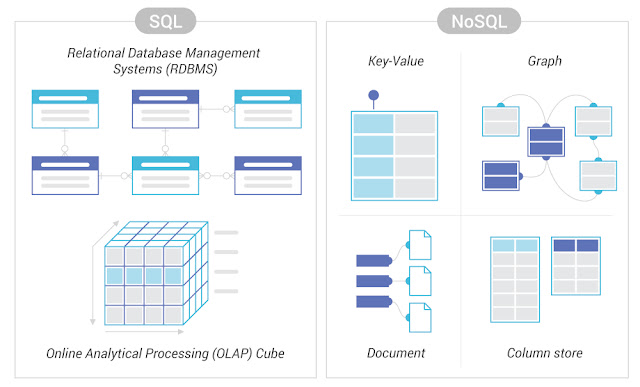A brief introduction to Databases on AWS
One of the crucial services AWS provides is databases. Of course you could run a database server on your own EC2 instance and depending on the particular circumstances, that might be optimal. At the time of writing AWS provides 15 purpose-built database engines for high-performance relational, key-value, document, in-memory, graph, time series, and ledger databases. These are fully managed with continuous monitoring which ensure business-critical workloads with high availability, reliability, and security.
Now really the infographics do most of the heavy lifting as they most succinctly outline the purposes of most of the databases. However, I'm not very satisfied with the above SQL/noSQL breakdown, so have included another below.
A relational database (SQL) organizes data into tables, establishing relationships between them based on key pairs, ensuring efficient data management and retrieval. A standard keypair might be a customer ID, for example that links all kinds of activities and transactions together.
AWS Database Migration Service (DMS) facilitates the migration of databases to and from the AWS Cloud. It supports homogenous and heterogeneous migrations - which means, it allows for the transfer of data between different database engines. DMS claims minimal downtime and automated task management, AWS DMS is a service which should simplify the process of database migration for enhanced efficiency.
Analytics is important for businesses today, but building a data warehouse is complex and expensive.
- Amazon Redshift is a fast and powerful, fully managed data warehouse that is simple and cost effective to set up, use, and scale. It enables you to run complex analytic queries against petabytes of structured data. It uses sophisticated query optimization, columnar storage on high-performance local disks, and massively parallel query execution. Most results come back in seconds.
Amazon Aurora is a cost-effective, highly available managed relational database compatible with MySQL and PostgreSQL. It offers significantly higher throughput, which makes it ideal for stuff like session data, over your standard MySQL and PostgreSQL. And again, all while being fully managed by Amazon RDS, eliminating concerns about tasks like hardware provisioning, patching, and backups!




















